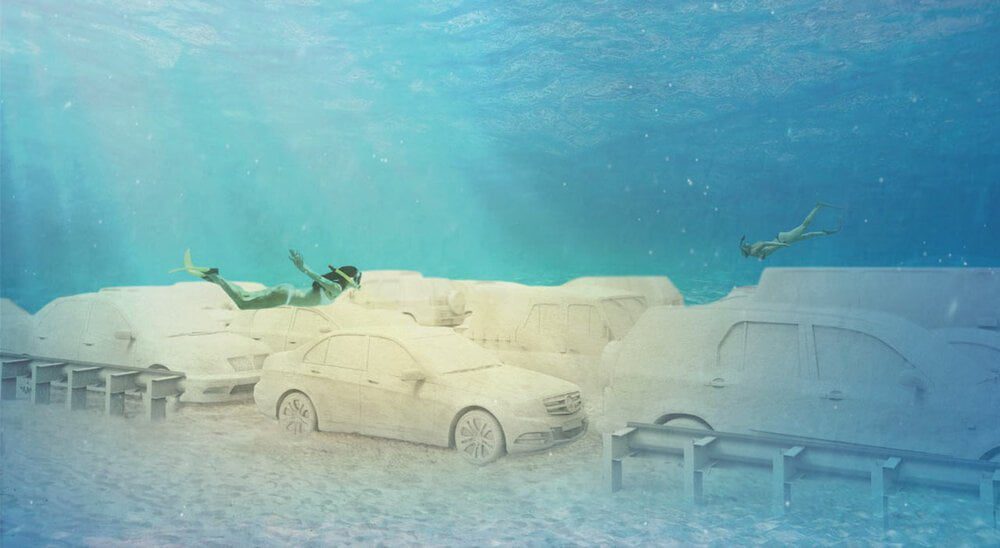
Concrete Vehicles Sunken in Miami to Create Man-Made Coral Reefs

Miami is renowned for its sunny shores, palm trees, and outdoor shopping centers, but are you aware that it also hosts the sole coral reef in North America? As the second most frequented city in the U.S. with over 4 million visitors annually, Miami is set to transform its coastline into a cultural landmark and a vibrant sanctuary for marine biodiversity. Dubbed ReefLine, this underwater sculpture park aims to emerge as one of Miami’s top tourist destinations and a fresh emblem for the city.
Marine biologist and coral specialist Colin Foord is busy cultivating thousands of live coral specimens for this initiative. “Utilizing urban corals that show resistance to bleaching and illness, the Miami Native Coral Lab will cultivate thousands of corals annually to restore reef habitats that have deteriorated over the years off the coast of Miami Beach,” he states. The corals will be transferred onto concrete sculptures, providing homes for various marine creatures and reinstating biodiversity in an area that has been declining since the 1970s.
As the artistic director and founder, Ximena Caminos envisions ReefLine as a blend of artistry and ecological preservation. “We are leveraging art as a means to actively create a more promising future,” she remarks. The project’s inaugural installation is Concrete Coral by Argentine artist Leandro Erlich, featuring 22 life-sized cars crafted from marine-grade concrete, positioned in a traffic jam on the ocean floor, symbolizing human impact and nature’s durability.
“The selection of cars serves as a metaphor: once symbols of pollution and speed, they are now transformed into instruments of renewal,” Caminos clarifies. The cars were deployed to the site in late October of this year.
ReefLine will be visible from above and accessible to snorkelers coming from the beach. Additional installations are already in the pipeline, including The Miami Reef Star by Carlos Betancourt and Alberto Latorre, and Heart of Okeanos by Petroc Sesti, slated for 2026.
Caminos anticipates that ReefLine will require a decade or more to fully complete its 7-mile reach. Along with the underwater creations, there are plans for a marine learning center onshore, where visitors can gain insights about coral conservation and the delicate ecosystems the project aspires to safeguard. Over time, the sculptures will evolve into living reefs, their surfaces adorned with coral and even discernible from the sky to those flying into Miami. Caminos is hopeful that The Miami Reef Star might become a symbol of the city.
ReefLine is an upcoming installation designed to support marine life recovery, be readily accessible to tourists, and draw attention to the issues causing reef deterioration.
Miami is home to the only coral reef in North America, but it has experienced decline since the 1970s due to climate change.
This ambitious endeavor will span over a decade and cover 7 miles along the coast. Three installations are currently underway: Concrete Coral, Heart of Okeanos, and The Miami Reef Star.
Concrete Coral serves as a metaphor for human influence and nature’s resilience, featuring cars arranged in a traffic jam, and was the first project to commence production in October 2025.
The initiative’s artistic director, Ximena Caminos, foresees that Miami Reef Star could evolve into a city symbol.
The installations will be visible from above, and an onshore learning center will be included to inform the public about the significance of coral reefs.
Source: Miami Beach puts the art in offshore artificial reef